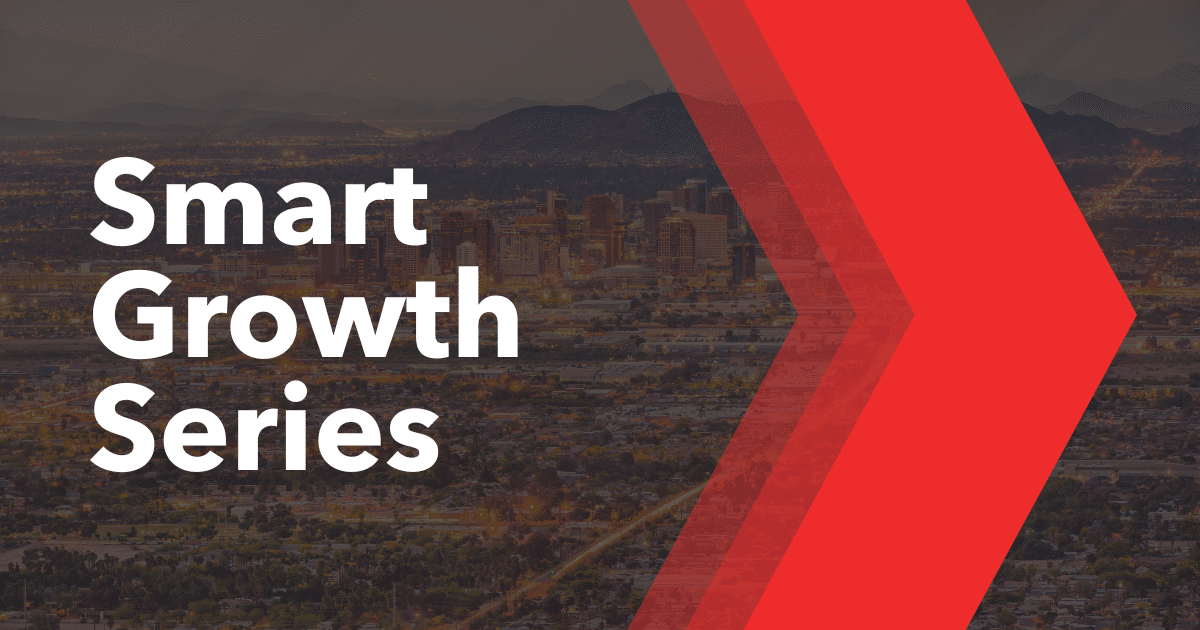

How Greater Phoenix Became an Economic Powerhouse—and Why Smart Growth Is Non-Negotiable
Published: 05/19/2025
Updated: 11/13/2025
by Chris Camacho, President & CEO, Greater Phoenix Economic Council
Greater Phoenix didn’t become a global contender by accident. The region’s fertile ground was recognized early on, and with bold moves, decades of strategic leadership built a prosperous, future-focused market.
The economic boom was marked by a population spike between 1950–70 when the widespread use of air conditioning led to increased construction and a reputation as year-round magnet offering unprecedented lifestyle and business opportunities. The market became desirable for millions, the region’s population grew by 347%, and the momentum kept going.
Early leaders seized this progress and built up next-gen industry and leading institutions to match the ambitious spirit of Greater Phoenix. Motorola took root in Phoenix in 1949, becoming the region’s largest employer while leading global semiconductor development for decades. Intel followed suit, establishing its Chandler campus in 1979 where it remains today. Honeywell Aerospace headquartered in Phoenix in 1942, benefitting from regional military installations like Luke Air Force Base, and historic investments from other aerospace and defense giants including Boeing, Northrop Grumman and General Dynamics followed suit.
Academic moves came in tandem with industrial growth – Arizona State University gained status in 1958 and Maricopa Community Colleges opened in 1962, declaring a commitment to building the brainpower to back the boom. Greater Phoenix wasn’t just a good place to live – it became a good place to build the talent and technology powering tomorrow.
But with monumental growth came criticism. In 1988, Barron’s ran a story titled Phoenix is Descending: Is Boomtown U.S.A. Going Bust? The attempted hit job questioned whether the region’s rocket ship growth was sustainable. What they missed entirely was this: Greater Phoenix doesn’t just adapt. We evolve.
One year later, the private and public sectors came together to form the Greater Phoenix Economic Council as a culmination of strategic strength. GPEC was a first-of-its-kind public-private regional model where municipal leaders, the business community and visionaries convened to create a prosperous future for Greater Phoenix.
It worked.
Today, the region is a globally competitive market with an infrastructure that delivers. We’re home to growing innovation corridors in semiconductors, biosciences, and aerospace and defense, supported by a robust talent pipeline, transportation system and willingness to test novel ideas. Our strategic location and friendly environment connect companies to global markets. Our workforce is young, educated, innovative and eager.
But the truth is, none of this happens on autopilot. Economic development isn’t a buzzword. It’s the strategy that connects vision to results. It’s the reason advanced manufacturers and major headquarters are choosing Greater Phoenix over coastal markets. It’s the reason job creation, sustainability and innovation are not at odds—they’re part of the same plan.
We’re launching this thought leadership series to double down on the fact that smart growth is not optional – it’s essential. Every community, every infrastructure bill, every zoning case, every investment in the electrical grid, every dollar allocated to education and technology, and every decision on workforce housing is vital to creating a competitive, prolific market. Smart, strategic economic development is key to building a sustainable, inclusive future. Stay tuned as we write the next chapter.